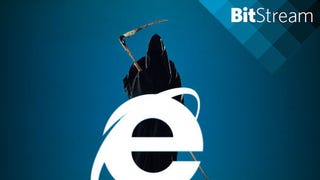What It Will Really Cost to Ditch Cable for à la Carte TV
That final unwavering bastion of old media—cable TV—is crumbling. And, surprise, tech giants are the ones putting the last nail in its coffin. But what will their alternative cost us? Let's take a look.
Last night, the Wall Street Journal gave unprecedented credence to a years-long list of rumors about Apple's TV subscription service, a 25-channel "skinny" bundle with major broadcasters like ABC, CBS, Fox, and also FX and ESPN. (One notable exclusion is NBC, owned by Comcast, which reportedly had a falling out with Apple while working on a joint TV-subscription service.)This isn't some "launching in a few years" rumor. Sources say Apple plans to launch this service in September at around $30-$40.
The rumored Apple subscription TV comes on the heels of similar streaming options from Dish, Sony, and of course the long-sought standalone HBO Now, to completely obliterate the traditional ways of television, and it's all happening this year. This is great—choice is great! Anything is better that dealing with Comcast.
But as we're fond of pointing out, the future of television isn't necessarily cheaper. It might noteven be worth it at all. Decide for yourself. Here's a rundown of all the confirmed and rumored prices of the streaming options on the a la carte TV platter.
What it costs to cut the cord
- Sling TV: $20/month—includes ESPN, AMC, TBS, Cartoon Network, Food Network, etc. Plus $5 for each additional programming package including news, lifestyle, Hollywood, kids, sports. (This all excludes basic channels like Fox, CBS, NBC, and ABC.)
- Apple TV: $30-$40 (rumored)/month—25 channels including basic cable (except NBC); only available on Apple devices
- PlayStation Vue: $50-$80 (rumored)/month—75 channels from CBS, Fox, Scripps, and NBCUniversal.
- HBO Now: $15/month
- Netflix: $9/month (for new users)
- Hulu: $8/month
- Amazon Prime: $100/year (or about $8 a month)
So to get a comprehensive television viewing experience, you're looking at something like this:
- Sling TV + HBO Now + Netflix + Hulu + Amazon Prime = $60-$85
- PlayStation Vue + HBO Now + Netflix + Hulu + Amazon Prime = $90-$120
- Apple TV + HBO Now + Netflix + Hulu + Amazon Prime = $70-$80
And if you're really serious about this TV subscription thing, the ultra mega package deal:
- Sling TV + PlayStation Vue + Apple TV + HBO Now + Netflix + Hulu + Amazon Prime = $140-$205
Compare that to a traditional cable package, and we're roughly neck and neck. In some ways, though, comparing a la carte TV and cable is sort of an apples and oranges comparison. Withcable, you can't always watch whenever you want, and you're stuck with an insufferable number of commercials. Streaming services, on the other hand, let you watch your stories on any device, and pay directly for the content without sitting through (as many) ads (for now).
No doubt many, many more companies will get involved (we haven't heard from Google or Samsung yet), and all will provide equally patchwork offerings where people will need to buy antennas for basic cable and continue sharing Netflix accounts. But one of the biggest barriers to bringing change to television has always been striking deals with cable companies like Comcast, Disney, and Time-Warner, which basically control all the channels you want to watch. Dish Network proved it could be done with Sling TV. Now tech giants like Apple and Sony are usurping cable companies as the new lords of television.
It would be naive to think tech companies will launch with a set price and never increase them in the future. Even Netflix had to raise prices recently for new users. These channels are also on contracts with these services, meaning channels can still blink out of existence on certain services, just like on cable. Apple already shows that some bundles will only further lock you into one ecosystem, whether an iDevice or a certain console.
The streaming trend is great news, but television in the hands of tech companies isn't really a revolution. It's more like new management.
Contact the author at darren.orf@gizmodo.com.


































No comments:
Post a Comment
Please leave a comment-- or suggestions, particularly of topics and places you'd like to see covered